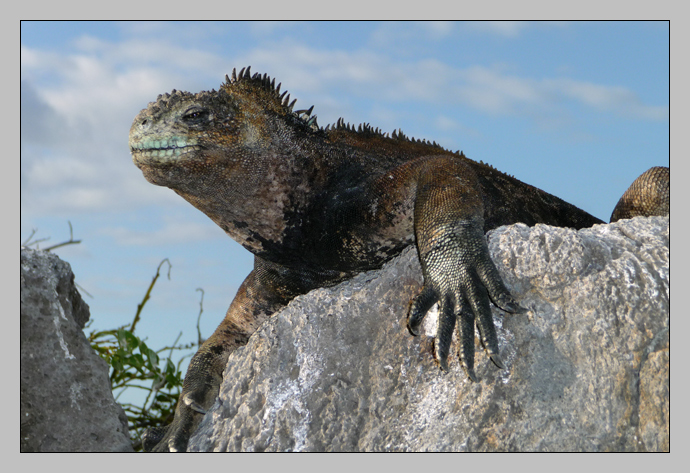Marine Iguana

Purchase a Print or
Download Wallpaper: 1920×1200 or 1600×1200
I went to the Galapagos without an SLR. There, I said it.
It wasn’t my fault. When I went to Ecuador with a group of eight college students, I made the decision to concentrate on video. Then only thing less fun than carrying around an SLR and a camcorder is trying to juggle them both on a shoot by yourself. Even so, I brought along a Panasonic Lumix point-and-shoot “just in case” (and because it literally fit in my pocket.)
Halfway through the trip, four of the students decided to spend a week in the Galapagos. We split the group and I went with them. While the Lumix proved invaluable for underwater video (with the underwater housing I brought along with it), it was extremely frustrating to use on land. Not that it can’t take good photos when the conditions are perfect; it has a decent chip and a nice long zoom lens. My biggest complaint with it (and for that matter, all point-and-shoots) was that I just could not tell if a photo was really in focus until I got it onto a computer screen.
So there I was, at probably one of the best places on the planet for wildlife photography, surrounded by other photographers with 400-600mm lenses, without a decent camera myself. I did the best I could with what I had.
And I got some good photos, too. I just lost some great ones while doing it.
They tell you not to use flash photography on the wildlife in the Galapagos, and for good reason. If every tourist pushed their strobes in front of the semi-tame animals, every iguana, blue-footed boobie, and sea lion on the islands would be stumbling around blind. I am normally very conscious about rules like that, but I realized, after the fact, that when I took a photo of this little guy, the auto flash had fired.
Granted, the shot really did need a good fill flash – without it he would have been a silhouette against that blue sky – but I felt guilty just the same. The iguana? He didn’t seem to mind. After I moved on, he continued to pose for everyone else in our group, too.
I’m looking forward to going back this November with my new 5D mark II. I only have a 200mm lens (with a 2x extender, if I need to push it to 400mm), but you can get so close to the animals there that that should be more than good enough.
Panasonic DMC-TZ5
Date: 4:59pm, 12 January 2010
Focal Length: 19mm (112 at 35mm equivalent)
Shutter: 1/640 second (Flash fired)
Aperture: F/4.7
ISO: 100
Photoshop: Auto color and minor cloning to remove a twig from the sky.
